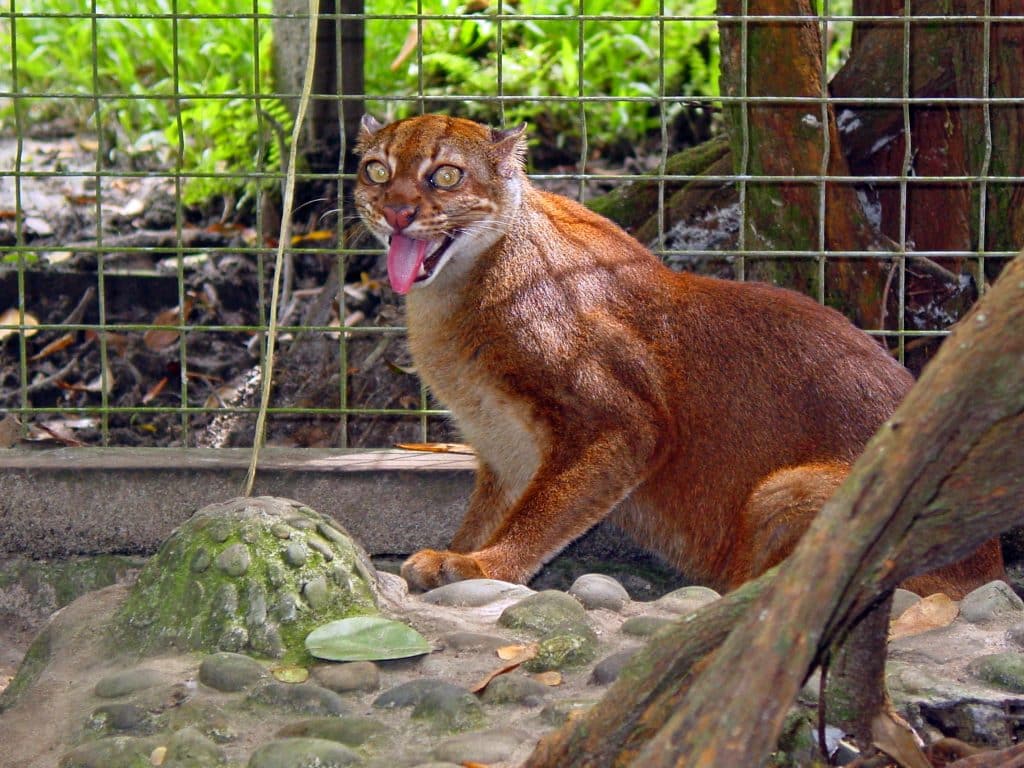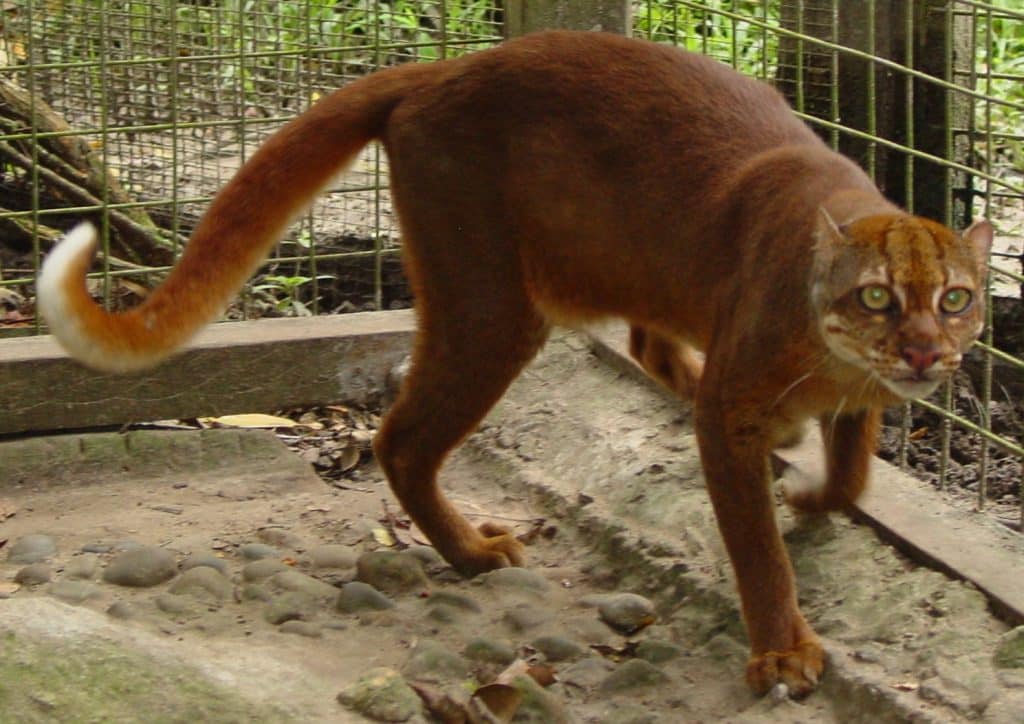Many wildlife species are dubbed “elusive.” Pangolins are hard to study due to their nocturnal and secretive nature. Snow leopards are rarely sighted. Dr. Rocío Palacios, Executive Director of Andean Cat Alliance, has admitted that most of her staff has never laid eyes on the Andean cat, causing them to nickname it a “ghost.” Still, all these highly elusive creatures pale in comparison to the bay cat.
Named for its brownish-red fur, the bay cat is the only feline endemic to Borneo. Not much else is known about this species, which disappeared for more than 60 years after it was first discovered. Researchers don’t know what the bay cat eats or how it hunts. It’s been determined that they live in the forest, but it is unknown how much territory the species needs. Nothing is known about the bay cat’s mating behavior or its reproduction. Worst of all, unlike its other elusive counterparts, we don’t know what threats have caused the bay cat to become so rare.
Despite not knowing much about the bay cat, scientists are confident that it is in decline.
The bay cat has been recorded less than 100 times throughout history. Jim Sanderson, Founder and Director of Small Wild Cat Conservation Foundation (SWCCF) and one of the world’s foremost experts on small wild cats, was able to capture a photo of a bay cat in 2008. Sanderson came across the feline at a menagerie in Sarawak. It was in a cage and in poor condition. A few days later, the bay cat was gone, having likely been sold into the illegal wildlife trade.
The photo manages to capture all of the feline’s distinct features—its yellow eyes, long white-tipped tail, and the rich coloring of its coat. To date, Sanderson’s photo still remains one of the best ever taken of the bay cat, and will continue to be if more action is not taken to conserve the species.
Its elusive nature not only makes the bay cat difficult to locate and research, but also difficult to raise funds for its conservation. Groups like Sanderson’s SWCCF, Panthera, and Re:wild are securing funding for small wild cat conservation. But the bay cat, as perhaps the rarest of a rare bunch, is hard to fundraise for because results are hard to achieve due to such a profound lack of knowledge about the species.
Sanderson is advocating for more conservation of the bay cat to motivate more funding, as well as for answers on why the bay cat is so rare. “No one can tell me specifically what the threats are,” Sanderson says, and this lack of knowledge is the main obstacle to developing effective conservation interventions.
If species like the bay cat can secure more conservation funding, then groups like SWCCF can make strides in understanding how to keep it from quietly vanishing.



